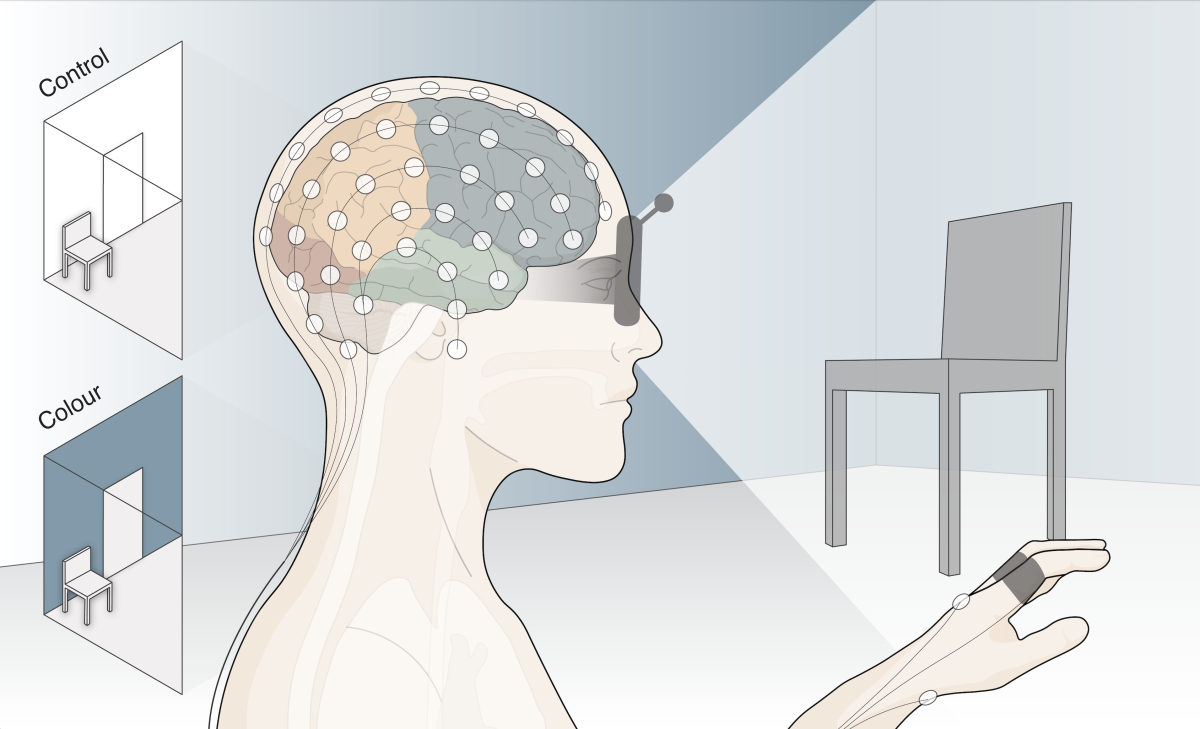Built environment color modulates autonomic and EEG indices of emotional response
You can view the paper here!
Abstract
Understanding built environment exposure as a component of environmental enrichment has significant implications for mental health, but little is known about the effects design characteristics have on our emotions and associated neurophysiology. Using a Cave Automatic Virtual Environment while monitoring indoor environmental quality (IEQ), 18 participants were exposed to a resting state (black), and two room scenes, control (white) and condition (blue), to understand if the color of the virtual walls affected self-report, autonomic nervous system, and central nervous system correlates of emotion. Our findings showed that exposure to the chromatic color condition (blue) compared to the achromatic control (white) and resting-state (black, no built environment) significantly increased the range in respiration and skin conductance response. We also detected a significant increase in alpha frontal midline power and frontal hemispheric lateralization relative to blue condition, and increased power spectral density across all electrodes in the blue condition for theta, alpha, and beta bandwidths. The ability for built environment design to modulate emotional response has the potential to deliver significant public health, economic, and social benefits to the entire community. The findings show that blue coloring of the built environment increases autonomic range and is associated with modulations of brain activity linked to emotional processing.
Reference:
Bower, I. S., Clark, G. M., Tucker, R., Hill, A. T., Lum, J. A. G., Mortimer, M. A., & Enticott, P. G. (2022). Built environment colour modulates autonomic and EEG indices of emotional response. Psychophysiology, 00, e14121. https://doi.org/10.1111/psyp.14121
